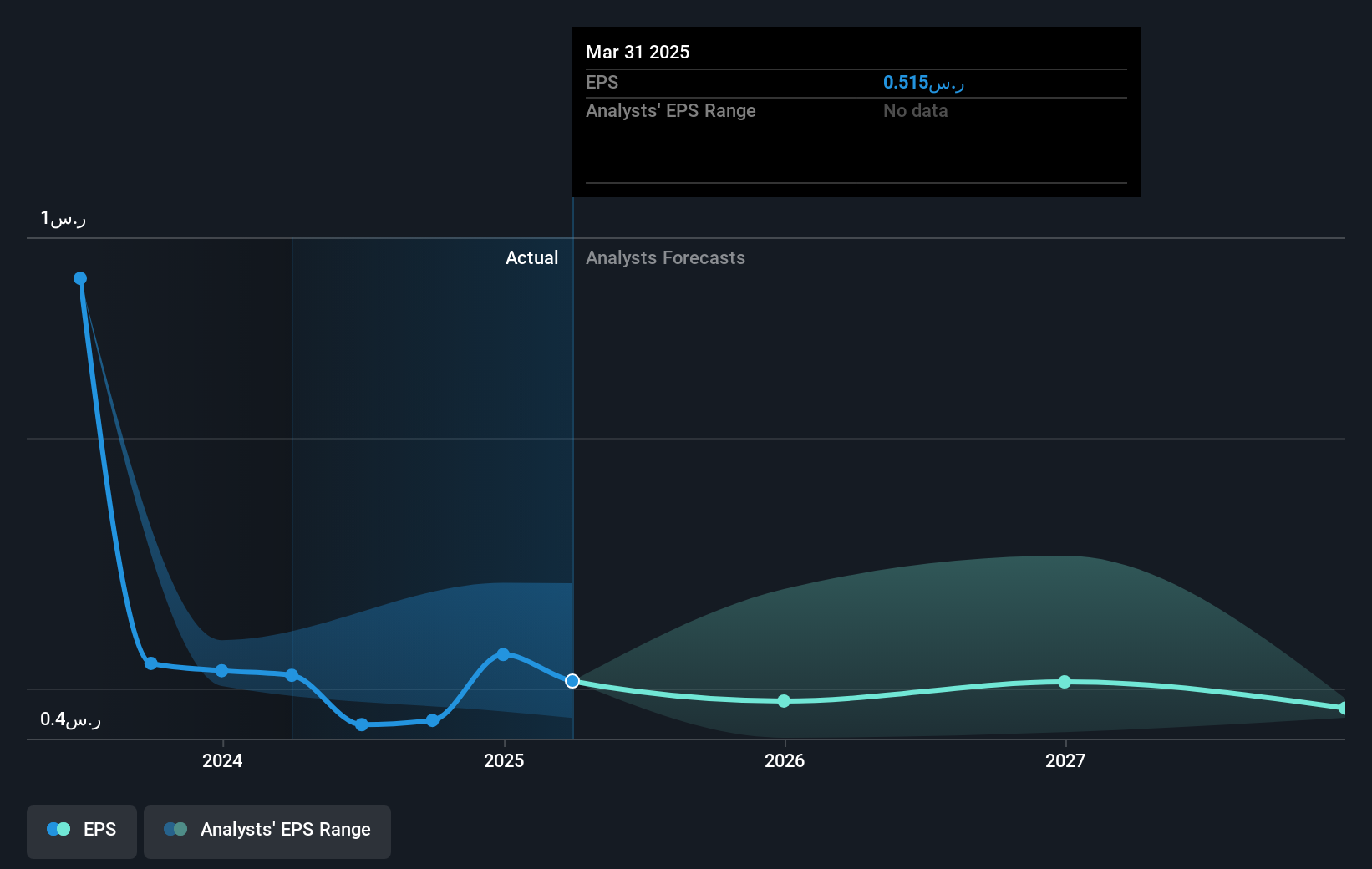Abdullah Al-Othaim Markets (TADAWUL:4001) earnings and shareholder returns have been trending downwards for the last year, but the stock ascends 4.0% this past week
The simplest way to benefit from a rising market is to buy an index fund. But if you buy individual stocks, you can do both better or worse than that. Investors in Abdullah Al-Othaim Markets Company (TADAWUL:4001) have tasted that bitter downside in the last year, as the share price dropped 30%. That's well below the market decline of 6.2%. Taking the longer term view, the stock fell 24% over the last three years. Furthermore, it's down 20% in about a quarter. That's not much fun for holders.
While the last year has been tough for Abdullah Al-Othaim Markets shareholders, this past week has shown signs of promise. So let's look at the longer term fundamentals and see if they've been the driver of the negative returns.
In his essay The Superinvestors of Graham-and-Doddsville Warren Buffett described how share prices do not always rationally reflect the value of a business. By comparing earnings per share (EPS) and share price changes over time, we can get a feel for how investor attitudes to a company have morphed over time.
Unhappily, Abdullah Al-Othaim Markets had to report a 2.2% decline in EPS over the last year. This reduction in EPS is not as bad as the 30% share price fall. Unsurprisingly, given the lack of EPS growth, the market seems to be more cautious about the stock.
You can see how EPS has changed over time in the image below (click on the chart to see the exact values).

Dive deeper into Abdullah Al-Othaim Markets' key metrics by checking this interactive graph of Abdullah Al-Othaim Markets's earnings, revenue and cash flow.
What About Dividends?
It is important to consider the total shareholder return, as well as the share price return, for any given stock. Whereas the share price return only reflects the change in the share price, the TSR includes the value of dividends (assuming they were reinvested) and the benefit of any discounted capital raising or spin-off. So for companies that pay a generous dividend, the TSR is often a lot higher than the share price return. In the case of Abdullah Al-Othaim Markets, it has a TSR of -27% for the last 1 year. That exceeds its share price return that we previously mentioned. And there's no prize for guessing that the dividend payments largely explain the divergence!
A Different Perspective
We regret to report that Abdullah Al-Othaim Markets shareholders are down 27% for the year (even including dividends). Unfortunately, that's worse than the broader market decline of 6.2%. Having said that, it's inevitable that some stocks will be oversold in a falling market. The key is to keep your eyes on the fundamental developments. Unfortunately, last year's performance may indicate unresolved challenges, given that it was worse than the annualised loss of 1.5% over the last half decade. Generally speaking long term share price weakness can be a bad sign, though contrarian investors might want to research the stock in hope of a turnaround. I find it very interesting to look at share price over the long term as a proxy for business performance. But to truly gain insight, we need to consider other information, too. To that end, you should learn about the 2 warning signs we've spotted with Abdullah Al-Othaim Markets (including 1 which doesn't sit too well with us) .
If you like to buy stocks alongside management, then you might just love this free list of companies. (Hint: many of them are unnoticed AND have attractive valuation).
Please note, the market returns quoted in this article reflect the market weighted average returns of stocks that currently trade on Saudi exchanges.
Have feedback on this article? Concerned about the content? Get in touch with us directly. Alternatively, email editorial-team (at) simplywallst.com.
This article by Simply Wall St is general in nature. We provide commentary based on historical data and analyst forecasts only using an unbiased methodology and our articles are not intended to be financial advice. It does not constitute a recommendation to buy or sell any stock, and does not take account of your objectives, or your financial situation. We aim to bring you long-term focused analysis driven by fundamental data. Note that our analysis may not factor in the latest price-sensitive company announcements or qualitative material. Simply Wall St has no position in any stocks mentioned.
 Wall Street Journal
Wall Street Journal